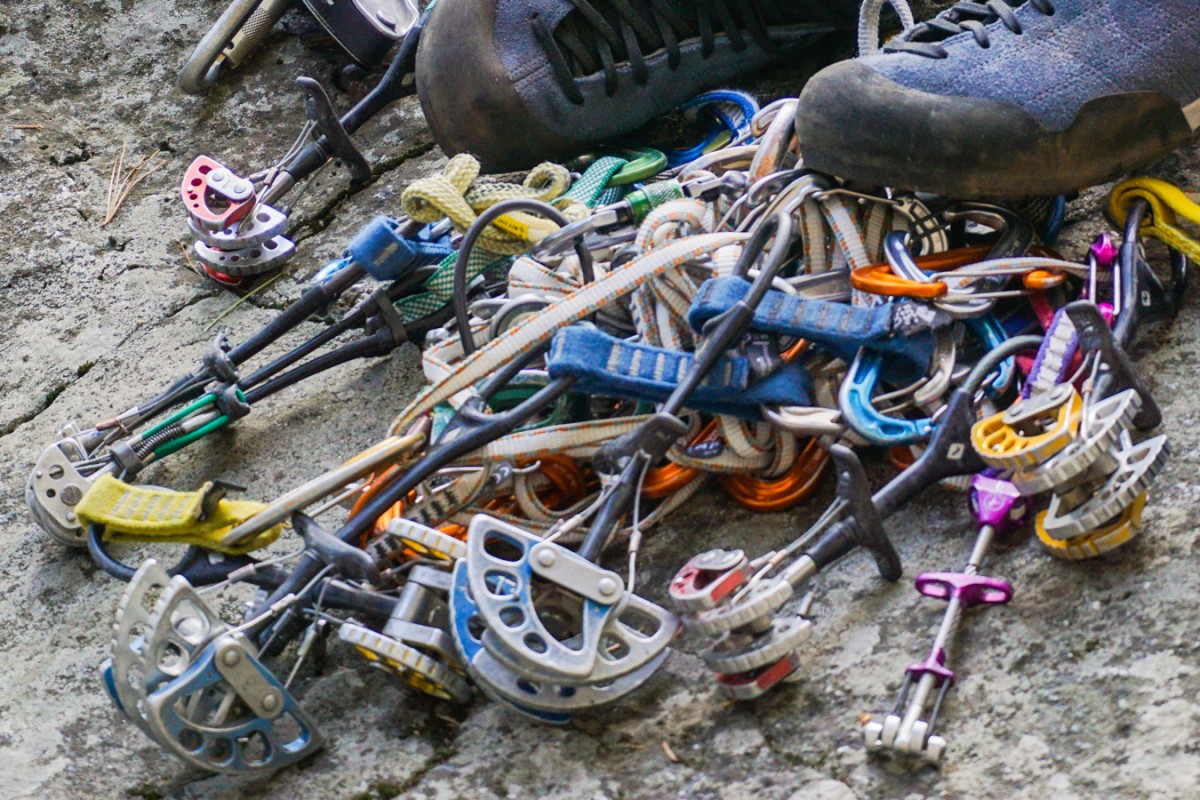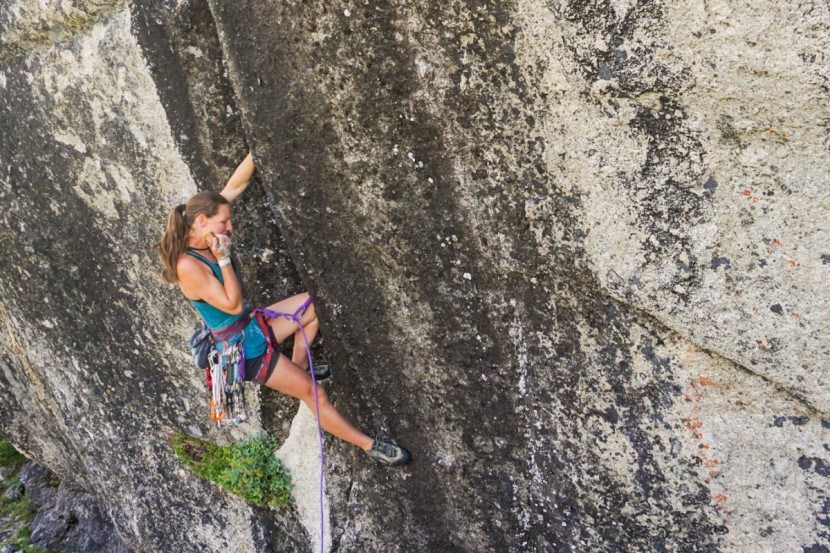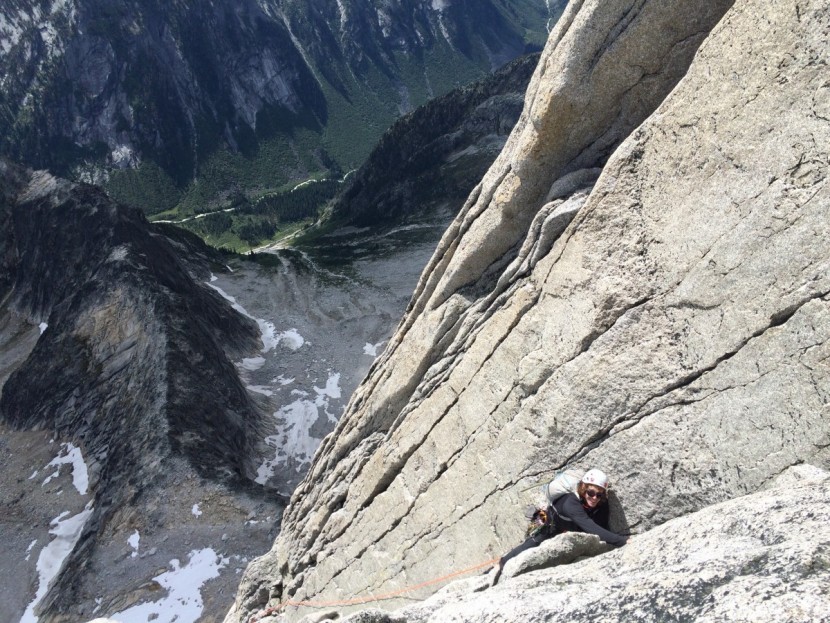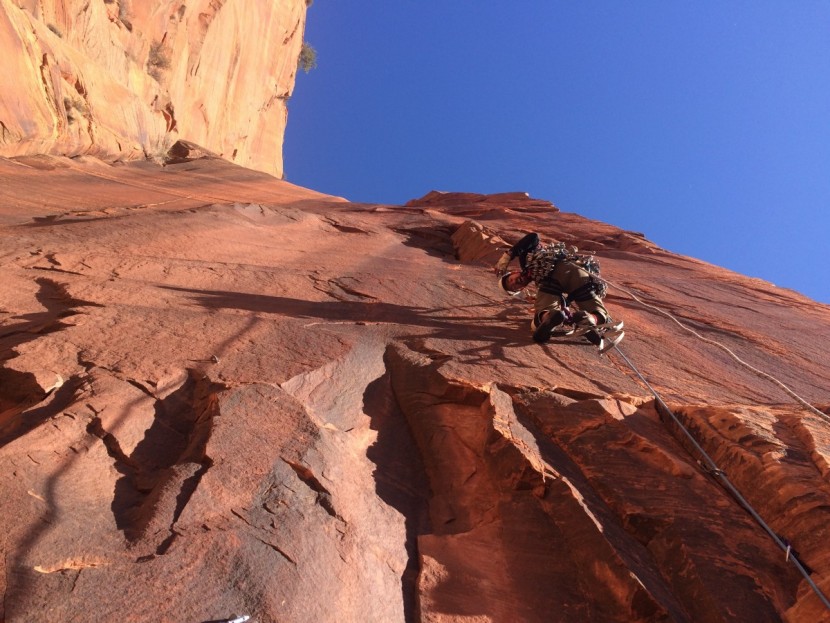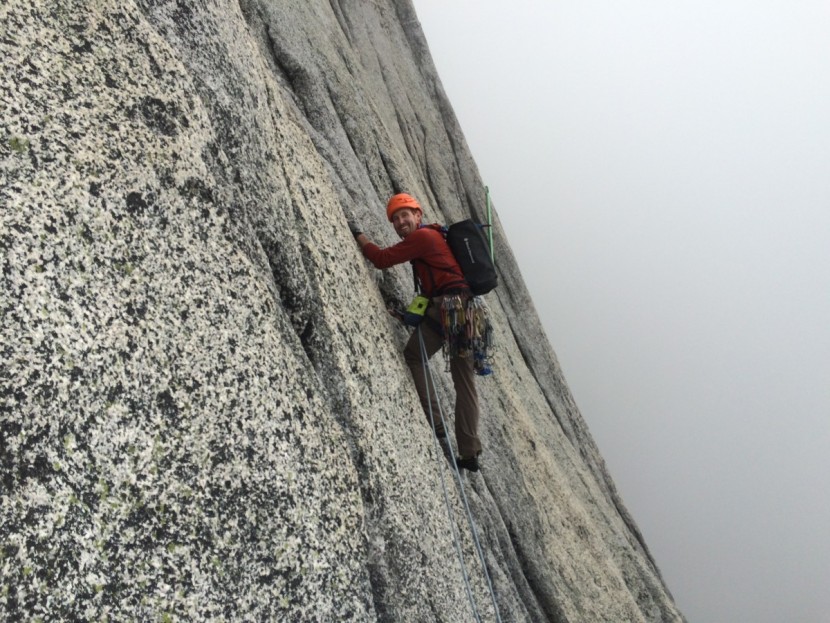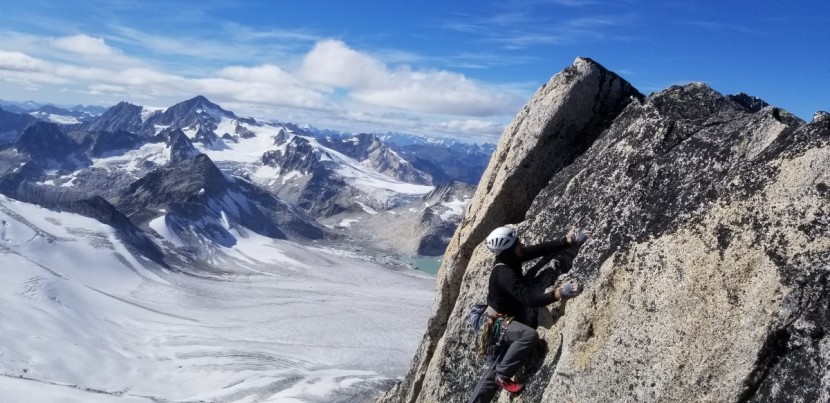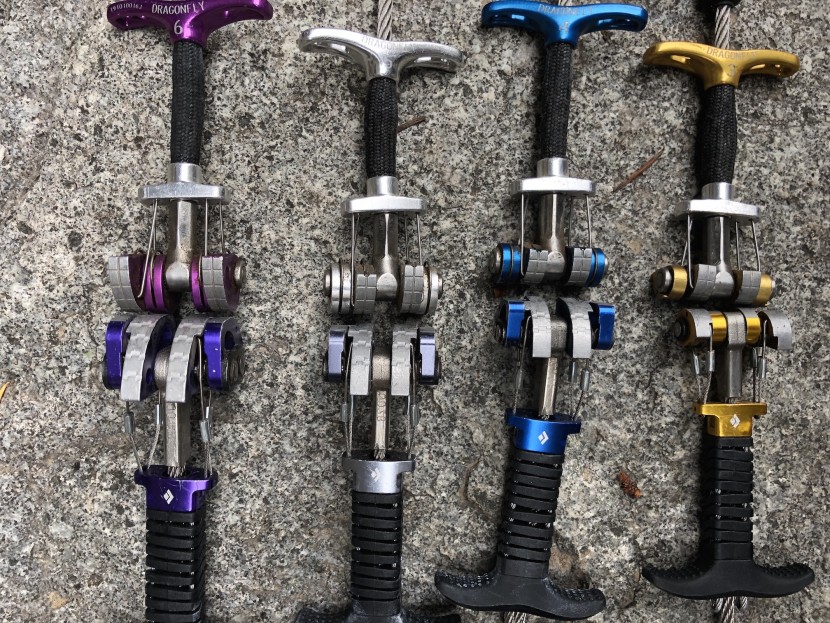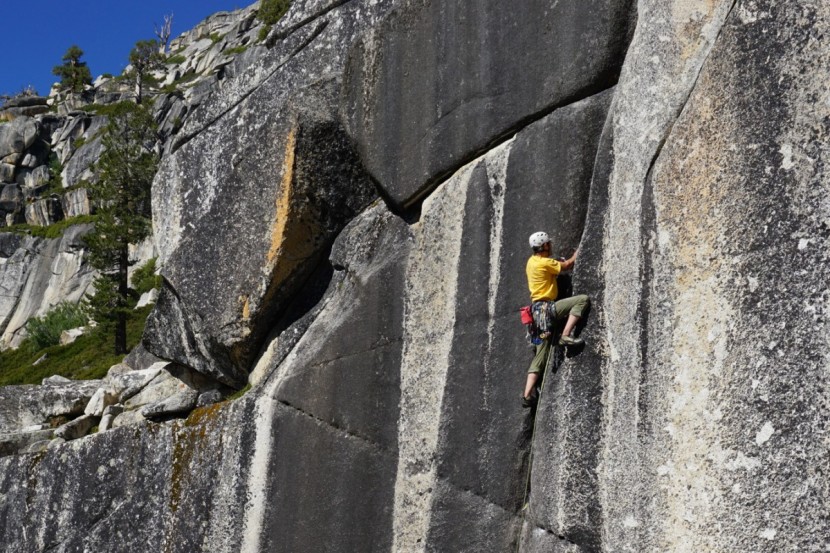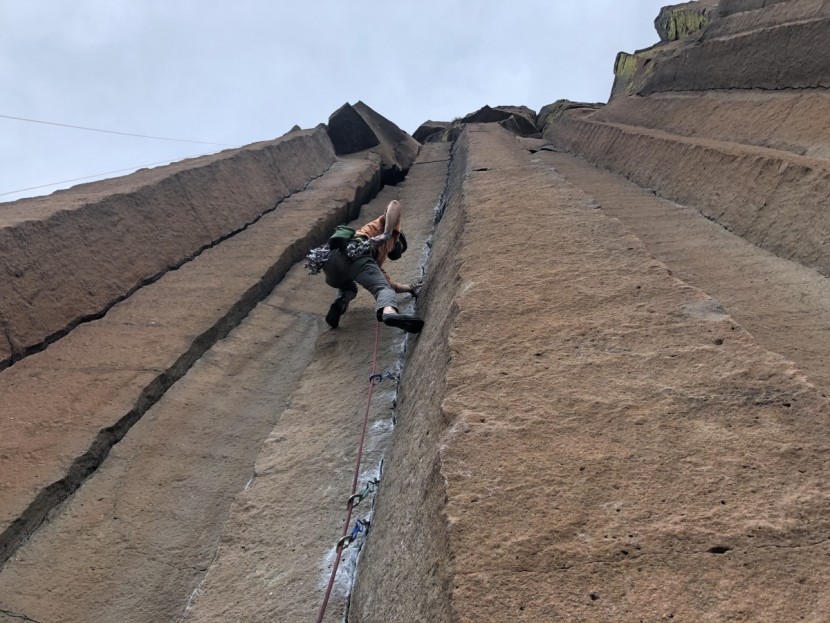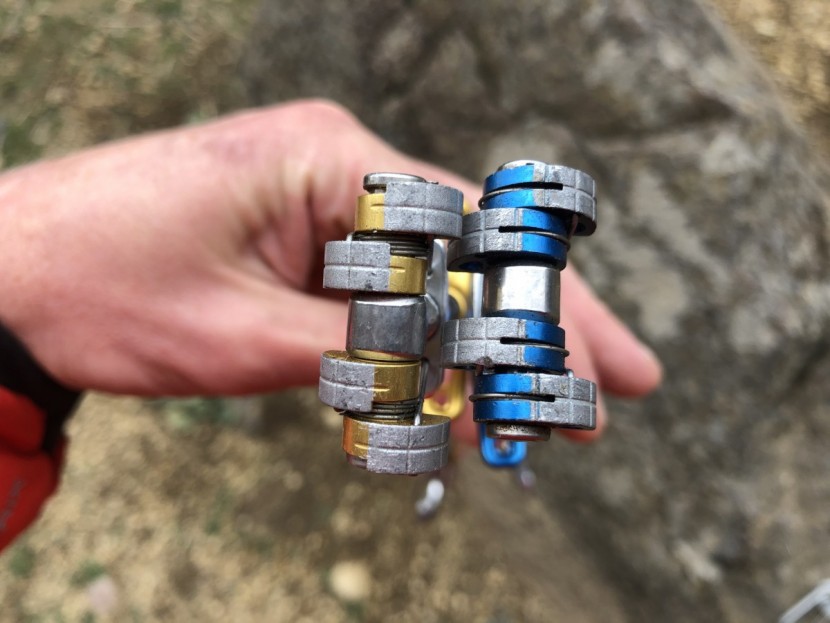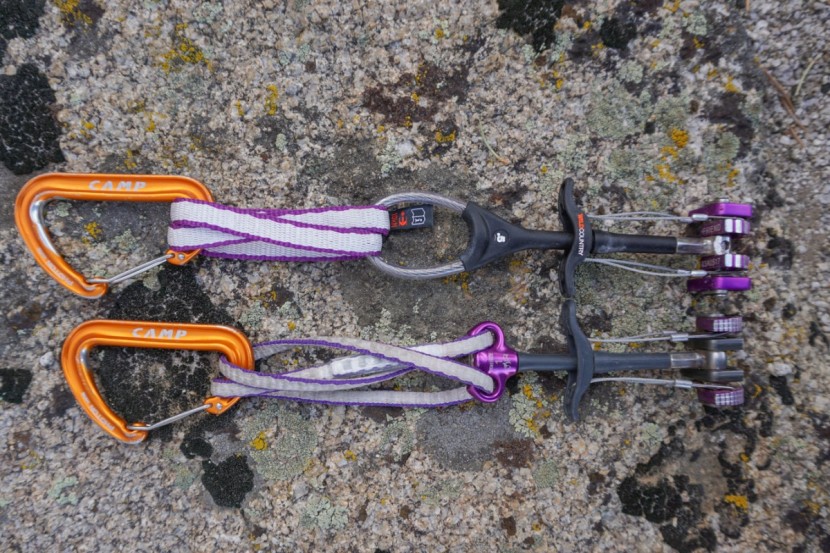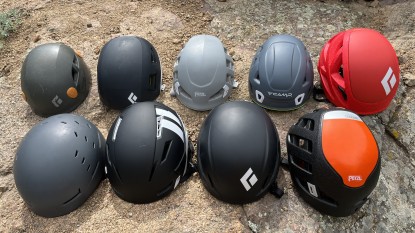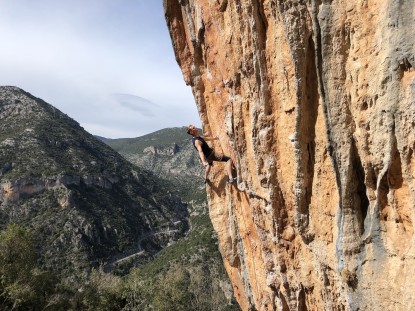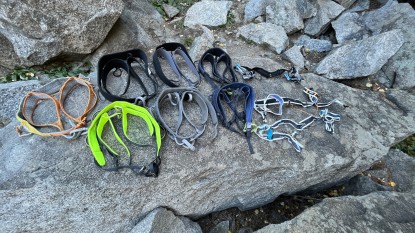Cams are essential equipment for modern traditional climbing. These highly engineered, sort of affordable, shiny spring-loaded gadgets allow safe passage up cracks narrower than a centimeter up to wide enough to fit your body inside. After decades of design and redesign, modern camming devices are the preferred method of protection because of their ease of placement and removal. While a competent trad climber can place bomber stoppers and other types of passive protection, nothing beats a confidence-inspiring #2 Camalot placed in bullet hard stone. With this buying advice article, we hope to impart some knowledge to you, the brand new, super psyched, frothing-at-the-mouth trad climber who can't wait blow their whole paycheck on a brand new rack of cams but wants to understand the ins outs before pulling the trigger. We will start by walking you through the things to consider when buying new cams for the first time, and finish by mentioning a few more particular design features that may influence your purchasing decisions.
Why Buy Camming Units?
There is no doubt that camming units are an optional piece of climbing gear. Before spending a month's worth of rent on a new rack, ask yourself if you really need to. If you are new to climbing and are content to climb in the gym, boulder, or sport climb where you will only be clipping bolts for protection, then indeed, a rack of cams is not immediately necessary. Newer climbers on a budget can spend a long time improving their strength and technique, not to mention honing their craft, and have fun doing it, without the need to own a whole rack of traditional gear.
Eventually, though, those who aspire to climb in the mountains or even multi-pitch climb at all, will become intrigued enough to want to learn to trad climb. Learning to place traditional protection without hurting yourself in the process is best done on climbs well below your maximum limit, and is best learned from a solid mentor who knows what they're doing. If you can't find a mentor, we highly recommend hiring a guide to teach you the necessary skills–your life could depend on it.
Once you are committed to the process, then eventually you will need to purchase enough protection to complete the climbs you are interested in. Even new trad climbers can only get away with climbing on a friend's rack for so long. While there are many forms of passive protection, such as stoppers, hexes, and tricams, the basis of the modern free climbing rack is the Spring Loaded Camming Device (SLCD), or cam. While hardmen back in the day weaned themselves off of pitons by using only stoppers and hexes, in these modern times, cams make up the backbone of any serious trad climbers rack, and newbies trying to get by without them are far more likely to end up in trouble. Those struggling to afford a rack should resist the urge to embark on an adventure under-equipped; have patience and wait until you have built up your rack, and skills, enough to tackle the climbs of your dreams.
How Many Cams Do I Need?
The climbs you wish to do, as well as your ability level, will be the only answer to this question, but generally speaking, most climbers should aim to acquire for themselves a “standard trad rack.” What a vague term! Most guidebooks will give racking beta based upon this vague term, and generally speaking, if both you and your partner own a standard rack, then you can easily supplement each others racks to come up with more of a particular size when needed.
So what makes up a standard trad rack? It's not precisely defined, but it goes something like this: A double set of cams from .5 to 2, one or two #3s and possibly one 4 (BD Camalots), a single or double set of finger sized and smaller cams, a complete set of stoppers, a good selection of micro stoppers, and 8-14 alpine quickdraws (double length sling with two lightweight wiregate carabiners). If you own this rack (with the double 3s and 4, plus double small sets), you will be able to climb at least 80% of the traditional pitches you will come across (except in Indian Creek), including the vast majority of multi-pitch classics. And, you should have no problem supplementing with a friend's rack to come up with what you don't have to tackle the rest of the potential amazing classics in the world. The only exceptions are in Indian Creek, where you typically need at minimum of 5-6 of a particular size(and often more), or if you want to climb and protect offwidths, where you may need to throw down the cash for one or more #5 or 6 size Camalots.
What If I Don't Have $1,000 To Immediately Buy A Whole Rack? What Should I Buy First?
What a fantastic question! If you are anything like we were when we were trying to acquire a rack, then you are broke, living off of ramen or Chipotle burritos, and saving your extra cash for gas, cheap yellow liquid (beer), and the occasional tub of Ben & Jerry's. Dropping a grand on a shiny new rack is out of the question! If this sounds a lot like you, then you'll have to go at it piece meal, but with a strategy. Birthdays and holidays are a great way to add a cam or two to your burgeoning rack, but ask the folks for gift cards, as they will likely never figure out exactly which cam to buy. If you decide to go the used route, be sure you can make a visual inspection before you buy. If you carefully look over the cam to make sure it is simply used, and not damaged, then it likely is fine, but don't trust blind internet purchases.
This is the order we would choose to acquire our rack, if we had to go at it one chunk at a time:
Step 1: 1 set .5 to 2 (4 cams), 3 different finger sized cams (3 cams), 1 full set stoppers, 6 alpine quickdraws, plus the 8 lightweight wiregate carabiners needed for racking your new cams and stoppers, and a nut tool. — Basically, it will be extremely hard to do much trad climbing with less gear than this, and honestly, it will be very hard to climb much with only this much gear. If you and your friend are embarking with only this as your rack, be sure the climb is mega easy, like 5.6 or under, seriously. If you and your buddy can each bring this much gear to the table, however, you are not too far off from a light “standard rack,” and should really be able to start having some adventures. Be sure you understand how to build equalized anchors, and have the equipment to do so, before you head out on these adventures!
Step 2: Add one #3, double up on .5 to 2, add in 4-6 more alpine quickdraws, and of course the carabiners needed for racking. — At this point, your stoppers and small cams are overlapping in size, so doubling up the larger stuff is imperative. While you will still be pretty light in the finger sizes, you should either be able to supplement with your friend's rack, or be doing climbs easy enough that they aren't super thin.
Step 3: Double up the finger sizes (3 cams), add in 1-3 micro cams, buy a set of micro nuts (usually 6-8 nuts), add another #3 and a #4 sized cam. Biners for racking. Your standard double rack is complete, and you now have enough gear to climb almost any classic that you have ever dreamed about!
Step 4: Up to you and your tastes. Add a #5 and 6? Add more micro cams? Triple it all up? Start collecting Big Wall aid gear? — You likely have the experience and knowledge to make your own strategy from here!
Should I Stick to One Cam Brand, or Mix and Match?
Most climber's racks are not made entirely of one brand of cams, it is far more common to have two different types — one brand for your set of small cams (sizes .33-1.25") and one brand for medium to large cams (sizes 1.5-5+"). We do not recommend carrying more than two brands except in the specialty sizes (huge and micro sizes). Those sizes you generally aren't going to use as often.
What brands to buy is a big decision. Once you commit to a brand, you typically want to stick to it as you expand your rack. This will help you when you're figuring out which color corresponds to which size crack, a skill that only comes with time and experience. Having a rack of mixed and matched cams of multiple brands can make it difficult to know what color to reach for, but not impossible. After climbing for a long time, you'll develop a sense for all the subtleties in sizing of the different brands, and buying cams based on what's on sale can be a good strategy for the penny-pinching dirtbag trying to build a complete rack. Your partners may curse you for this. On the bright side, more and more companies are switching to a “standard” color scheme (the colors used by Black Diamond seem to be becoming the standard). So a yellow cam in one brand is about the same size as a yellow cam in another, but we still recommend taking your time to find your favorite brand and then committing to it.
For finger and micro cam sizes, it is far more common to have a mixed and matched selection. There is no consensus in the community, or amongst our testers, which small cams are the best. Having a complete set of one single brand is a good idea, because then you will have continuity and no gaps between sizes. However, when you are shopping for the second set, there are many compelling advantages to choosing a different brand, so that your different sets of small cams complement each other with their respective advantages, and cover for any disadvantages, to handle every potential situation.
Other Considerations
You likely now have a strategy for buying your rack, so below we will expand the discussion to answer some questions about various technical aspects of cams. This discussion will only cover things not discussed in our main Best In Class article, where we thoroughly discuss how each cam performs for free climbing, weight, range, tight placements, horizontals, durability, walking, and aid climbing.
Strength
All the cams in this review are CE or EN certified, and come with listed strength ratings, depicted in force (kilonewtons, or kN). Larger size cams are generally rated to 10-14kN, capable of holding significant falls and making bomber anchors when placed correctly in high-quality stone. Smaller cams, especially in the micro sizes have less holding power, and distribute forces over a tiny area, making them more likely to break through weak or chossy rock and pull out. Always read the manufacturer information when you buy a new cam and know its limitations.
Small Placements
Just about any brand of cam will protect cracks a half inch or larger, but for small placements some brands have an advantage due to their narrow heads and flexible stems. DMM Dragonfly Cams, Metolius Ultralight Mastercams, Black Diamond Z4s, and the Fixe Hardware Alien Revolutions are available in the smallest sizes, in some cases all the way down to .29 inches! The very smallest sizes may only be rated to 5kN, which could be pushing it for taking falls onto, depending on the situation and the forces involved. The very smallest Dragonflies are rated to 6kN, which may not seem like much more than 5, but is significant if you are free climbing on thin gear. Be aware that falling on tiny pieces tends to concentrate all the force of the fall in a very small area. Folks in the know double up on tiny placements when they can, especially in sandstone when fat whippers are in the forecast.
Pin Scars
Pin scars are the scourge of Yosemite Valley, and the dirty little secret of big wall free climbing. Pin scars are essentially holes or pods created from climbers hammering iron pitons into cracks. After many ascents, the pods become large enough to stick your fingers and toes inside, creating artificial hand and foot holds. Many are also large enough to protect with small cams, though getting a good placement can be a bit funky, and certain types of cams fit better in pin scars. Cams with narrow heads and flexible stems work well and offset sizes work even better, since they better match the flared shape of the pin scar. Fixe Hardware Alien Revolutions, Black Diamond Z4s, and Metolius Ultralight Mastercams are useful for protecting pin scars, and all are available in offset sizes. DMM Dragonflies are also handy, but don't come in offset sizes. The Totem Cam is the new king of the pin scar, with a vast range and the ability to load each side independently, each cam can protect offset and parallel placements, eliminating the need to carry an additional run of offset sizes. We recommend Totem Cams to any veteran or aspiring El Cap climber. If you climb perfectly parallel cracks like in Indian Creek, most cams will work just fine, but cams with the most surface area on the lobes such as Wild Country Friends and Black Diamond Camalots are ideal.
Cam Range
Cam range refers to how big or small a crack each piece can protect. For example, a cam might be two inches wide when fully open and go down to 1.5 inches while another cam may start at two inches and go all the way down to one inch. The bigger the range, the more options each cam gives you. Double axle cams used to have the most range, but now there are new ways to create even more range in each piece. Cams with double axle designs such as the Black Diamond Camalot Ultralights, DMM Dragon Cams, and Wild Country Friends have a greater range than single-axle cams. The double-axle design allows larger lobes to be retracted to a narrower position.
Even if every cam on your rack has a vast range, you don't necessarily want to carry any fewer cams. You still need a lot of protection pieces to climb a pitch safely. The wider range just makes it so you are less focused on conserving gear up the pitch. So if the way a cam allows for more range is by making the cam heavier, you may end up with a more substantial rack by carrying cams with a more significant range.
Cam Angle
Every manufacturer chooses a slightly different cam angle for their cams. Generally speaking, larger cam angles allow for a greater range for that piece, but the cam transfers less force straight outward. Smaller cam angles manage to transfer more of the force outward, but also come with a corresponding dip in range.
Many companies use the camming angle as a marketing tool, claiming that the angle they engineer their cams to is the “most ideal.” For example, Metolius says that all their cams have an “optimized cam angle for more outward force,” which implies their cams should hold better than other cams. We don't know of a way to evaluate this in the real world. Someone with an engineering degree could argue why one cam angle is superior to another in a lab environment. But there are just too many other factors to isolate whether the Metolius cam angle makes it hold better. In our subjective tests, we find that differences in cam angle probably only make a big difference in a lab or a perfect parallel crack.
In the real world of climbing, more critical than cam angle is how well the cam is placed. Does the axle design let it get into tricky spots? Does the head width allow it to fit in the pod completely? Is the stem flexible enough to transfer the force down rather than levering it out? There are so many different factors affecting how a cam holds in the rock during a fall, including the placement, but also the quality and hardness of the rock itself. Cam angle is just one of them, and we don't think it alone is a reason to buy one cam over another.
Aluminum Alloys
The cam lobes of each cam are made out of some alloy of aluminum. Each alloy is listed as a number, such as 6081, which defines its particular characteristics. There is no perfect alloy, as each have their own advantages and disadvantages, and we don't think it should be a very big consideration in your cam search. In general, cams use either a softer or harder alloy of aluminum, and the manufacturers have carefully chosen which alloy to use in order to optimize the performance of their cams. In general, the larger cams tend to use harder alloys, which are more durable, but perhaps don't “bite” as well into little granules in the rock as well as softer alloys. This is why larger cams often have teeth to provide extra bite. Smaller cams tend to have lobes that are smooth and are made of softer alloys, which actually deform slightly when they come in contact with crystals or granules of rock, allowing the rock to bite into them, and providing enhanced grip. Fall on a small cam and you will see this deformation. We have found that these cams can sustain a lot of use, and are even usable after little deformations, so don't become alarmed.
Length of Slings
All cams come with a built-in sling, but some brands offer an extendable sling option, allowing you to protect wandering pitches and reduce cam walking without having to carry as many quickdraws. This saves the leader time and means you can climb with fewer extra runners. The downside to extendable slings is they can be a little difficult to “de-extend” by the follower on the go, with one hand. With practice, it's not too hard, but if you're pumped and intent on following a pitch free, you'll have a bunch of cams swinging around low on your harness as you thrash your way up the pitch. The DMM Dragon Cam has the longest extendable sling, and also a cool thumb piece that allows for the Dyneema sling to extend without any loss of strength.
We hope that the information presented above has been helpful in your climbing quest. Check out our complete Climbing Cams Review to see how the top cams score against each other.

